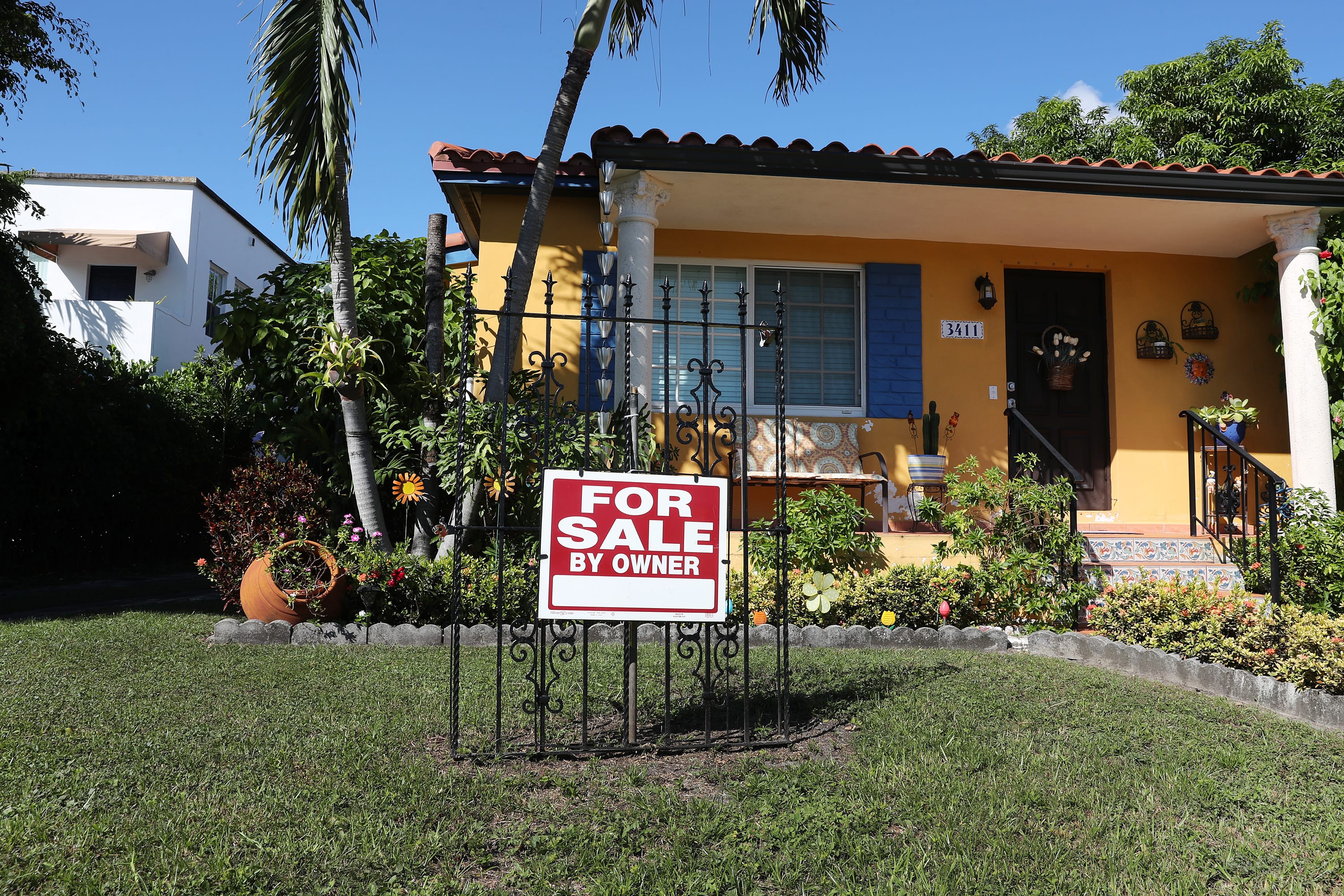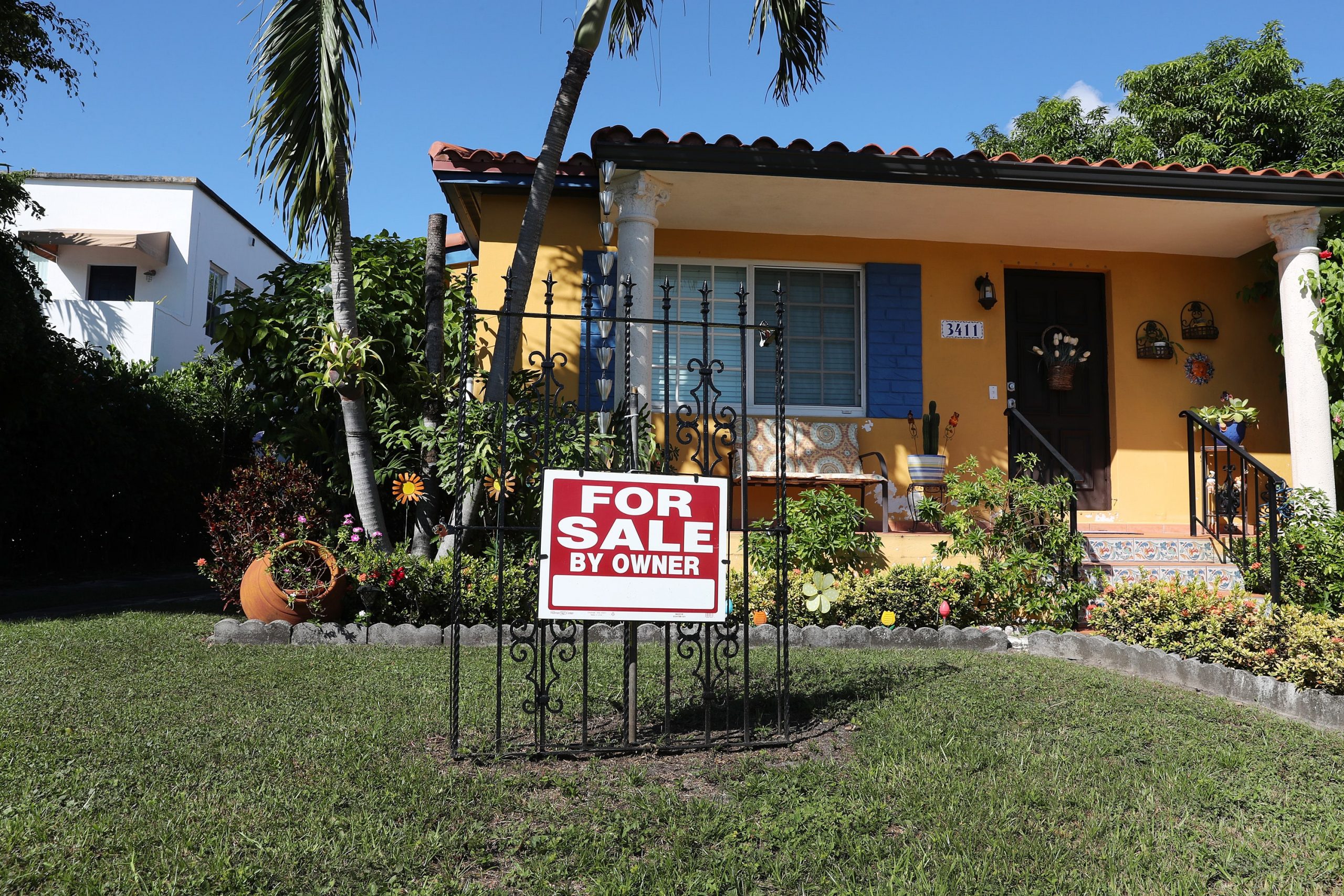
A For Sale sign is seen in front of a home in Miami, Florida.
Joe Raedle | Getty Images
The economic fallout from the coronavirus hit the housing market hard in April.
Sales of existing homes fell 17.8% month to month, and were 17.2% lower than April 2019, seasonally adjusted, according to the National Association of Realtors. That puts the annualized pace at 4.33 million units, the slowest sales rate since September 2011.
These numbers are based on closed sales, not signed contracts, so they represent contracts signed in late February and March. The April drop in closings is the largest one-month decline since July 2010, when the homebuyer tax credit, a federal stimulus resulting from the subprime mortgage crash, expired.
“Certainly with the lock-down occurring from mid-March, and given the shakiness from the stock market in February, that hurt pending contracts, so now we are seeing an almost 20% decline in existing homes sales,” said Lawrence Yun, chief economist for the Realtors. “April activity will be down, but what we are hearing from Realtors is they are getting busy as governors are opening the economy.”
The supply of homes for sale fell 19.7% annually to 1.47 million units for sale at the end of April. That is the lowest April inventory figure ever. Not only did potential sellers decide not to list their homes, as job losses mounted and the economy shut down, but some sellers already on the market pulled their listings.
That drop in inventory pushed prices to a new high. The median price of an existing home sold in April rose 7.4% annually to $286,800. That record does not account for inflation, but is a nominal record high.
Regionally, sales in the Northeast fell 16.9% monthly and 18.2% annually. In the Midwest, sales were down 12% monthly and down 8.3% from a year ago. In the South, sales dropped 17.9% monthly and 16.8% annually. In the West, where prices are highest, sales fell the most, down 25% monthly and down 27% from a year ago.
Mortgage rates did not help buyers, as they not only jumped, but were highly erratic in March, and lending tightened dramatically due to coronavirus mortgage forbearance programs that allow homeowners to delay payments. That made it even harder for those few buyers out in the market to get the financing they may have needed.
Home selling largely went online in April, with the few buyers still in the market doing most of their shopping through virtual tours and live showings with real estate agents over tablets or smartphones. Some agents report selling to buyers who never actually entered the homes.
The numbers in April also showed a new trend away from condominiums. Single-family home sales dropped 16.9% for the month, but condo sales fell a much wider 26.4%.
“This could be a short-term shock from the use of common rooms or elevators in condos, or it could be a long-term trend of people wanting to buy away from the cities and in the suburbs,” added Yun.
Individual investors or second-home buyers, who often buy using cash, purchased 10% of homes in April, down from 13% in March and 16% in April 2019. All-cash sales accounted for 15% of transactions, down from 19% in March and 20% a year ago.
Signs are already pointing to a remarkable recovery in housing. Mortgage applications to purchase a home were down just 1.5% last week compared with the same week one year ago, according to the Mortgage Bankers Association. Just six weeks ago, those applications were down 35% annually. Mortgage rates have also fallen back dramatically, hitting several record lows in the last few weeks.
“The key question is whether sellers will return to the market so buyers have options to choose from,” said Danielle Hale, chief economist at realtor.com. “Confidence surveys show that many believe it is not a good time to sell, and our weekly data shows fewer sellers putting homes on the market than a year ago.”


 Signal2forex.com - Best Forex robots and signals
Signal2forex.com - Best Forex robots and signals




